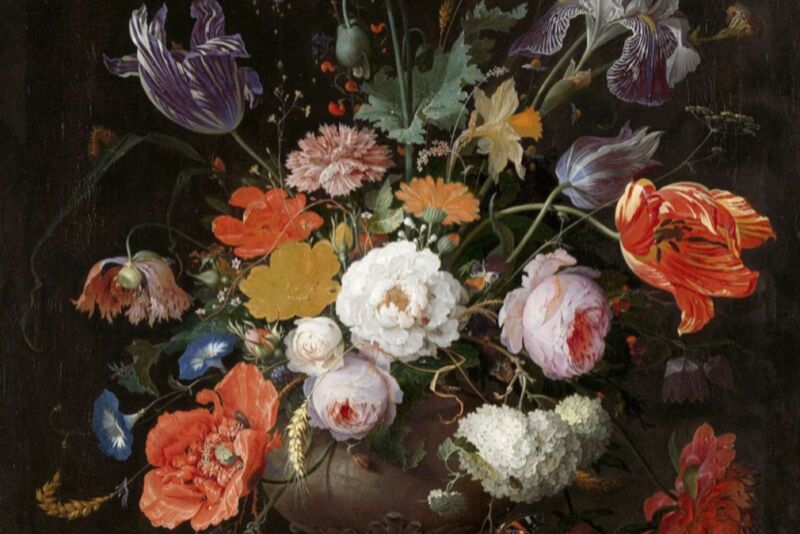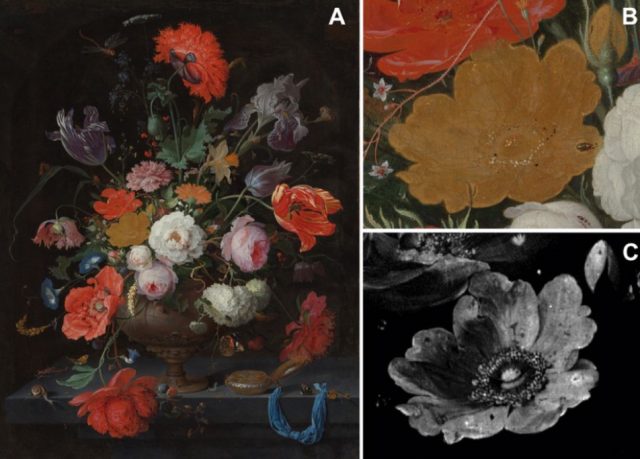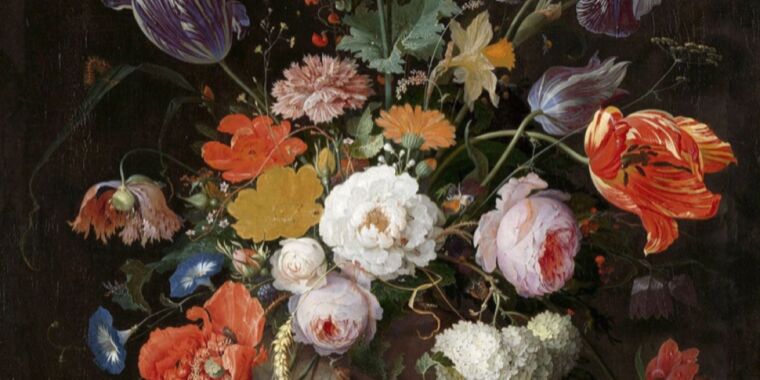
The 17th century still-life painter Abraham Mignon was known for his depictions of flowers, fruit, forests, and grottoes, among other objects. But over time, certain pigments have degraded to such an extent as to alter the artist’s intent. Most notably, a yellow rose prominently featured in Mignon’s Still Life with Flowers and a Watch has become flattened and monochrome, particularly compared to the other blooms featured in the painting.
A team of Dutch and Belgian scientists used chemical and optical imaging techniques to examine the elemental distribution of the various pigments, according to a recent paper published in the journal Science Advances. In this way, they could infer Mignon’s original painting technique—specifically how the artist built up layers to create what would have been a 3D appearance for the original rose.
According to the authors, over time, artist pigments and binders in oil paintings inevitably deteriorate when exposed to external factors such as light, relative humidity, temperature, and/or exposure to solvents, as well as incompatible pigment mixtures. The result was discoloration and color changes that can affect the paint’s structural integrity, causing such defects as loss of transparency, brittleness, or micro-cracks.
Examples of this kind of degradation include the discoloration of a blue glass pigment Rembrandt used in several paintings; the fading of light-sensitive pigments—Prussian blues, organic yellow, and red lake pigments—and the darkening of chrome and cadmium yellow in the works of Edvard Munch, Vincent van Gogh, and Pablo Picasso, among other great artists.

N. de Keyser et al., 2022
“At an advanced stage, these phenomena can decrease the readability of the artwork and hence significantly alter the artists’ intention,” they wrote. That includes altering intended optical effects, such as the folds of draperies, which can disappear, making the object appear flat. This is what happened, for example, with the ultramarine degradation in Jan van Eyck’s Three Marys at the Tomb. Also, the fading of red pigments in Van Gogh’s The Bedroom turned purple walls blue and a pink floor brown—a reverse optical effect.
Mignon’s yellow rose—a signature flower among 17th century still-life painters, per the authors—has suffered a similar fate. The rose provides “an exemplary topic for this study, looking flat and poor in color contrast while featuring a crumbling powdery appearance or a significantly broken up paint surface,” the authors wrote, adding that the rose lost most of its 3D character, particularly when compared to the other, better-preserved flowers in the painting.








